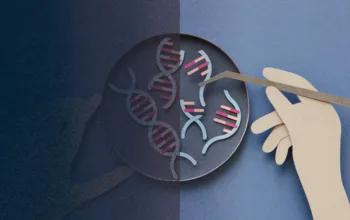The bipartisan Fostering Innovation in Global Development Act would promote foreign aid programs with a rigorous evidence base.
Few US government agencies have seen as much energy devoted to reforming them in recent decades as the US Agency for International Development (USAID). President George W. Bush dramatically expanded US spending on global health, and funneled much of that through USAID; under Barack Obama, the agency made a heavy push to evaluate more programs and elevate programs with good track records; under Donald Trump, the agency underwent a major reorganization, creating new bureaus of humanitarian assistance and development, democracy, and innovation.
President Joe Biden’s USAID administrator Samantha Power has promised big changes too: less red tape, more funding based on good evidence, reorganizing the Trump administration reorganization.
For all that effort, the agency is still far from where many global development advocates want it to be. As my former colleague Siobhan McDonough explained last year, USAID relies heavily on a small number of well-connected contractors to deliver most aid, while other groups are often deterred from even applying by the process’s complexity. Use of rigorous evaluation methods like randomized controlled trials — where development programs are tested on a random subset of the target population to see if they work — are the exception, not the norm. If the goal is for the vast majority of USAID’s $41 billion-odd annual budget to go to proven, evidence-based programs implemented in a cost-effective way, a goal that its administrators have shared for decades, there’s still a long way to go.
A bipartisan piece of legislation being introduced this week aims to push the agency much closer to that goal. The bipartisan Fostering Innovation in Global Development Act, or FIGDA, was first proposed last December by Reps. Joaquin Castro (D-TX) and Young Kim (R-CA), just before the end of the 117th Congress, when action was unlikely. For the 118th Congress, though, the sponsors are optimistic the bill will be taken up, and they have a broad coalition of groups in global development, known as Unlock Aid, backing them up.
They have a decent chance: While Congress under divided government has tended to get mired in major partisan battles over spending in the 2010s and 2020s, global development has managed to remain bipartisan, with numerous bills passing with both parties’ support in recent years.
“It’s well-drafted … I don’t see any downsides, I don’t see any bad elements of this legislation,” says George Ingram, a senior fellow at the Brookings Institution’s Center for Sustainable Development, and a former senior congressional staffer working on foreign aid, says. “And I’m somebody who wasn’t involved in drafting it.”
Making USAID a hyper-efficient machine for delivering aid with evidence of impact is a bigger task than one piece of legislation can accomplish. The agency has challenges, from a dysfunctional workforce mixing civil servants and better-paid contractors, to a reticence to give money directly to beneficiary countries’ governments. Fixing those problems would require additional changes beyond the scope of this bill. “My biggest friendly criticism is ‘go even further,’” Mark Green, who ran USAID from 2017 to 2020 after tenures as a congressman and ambassador to Tanzania, told me.
But FIGDA takes aim at a few concrete barriers to expanding the use of evidence in the agency, which hopefully moves the agency a little closer to where it needs to go.
What FIGDA would do
/cdn.vox-cdn.com/uploads/chorus_asset/file/24607370/1354086614.jpg)
Anna Moneymaker/Getty Images
To understand FIGDA, you have to understand a program within USAID known as Development Innovation Ventures, or DIV, that accounts for just one-thousandth of the agency’s total budget.
Launched in 2010, DIV is a relatively small group within USAID, with a venture capital-style approach, that funds both pilots of new development programs and “scale-ups” that attempt to replicate and build on previous successful pilots. Where USAID is often seen (fairly) by development practitioners as a vast, sluggish bureaucracy slow to react to new evidence, DIV has the opposite reputation: it focuses on sending out grants to projects quickly, and requires that anything being scaled up be backed by rigorous evidence.
To advocates, DIV’s numbers speak for themselves. A 2021 paper by Nobel-winning economist Michael Kremer (who cofounded DIV), DIV’s now-leader Sasha Gallant, and economists Olga Rostapshova and Milan Thomas estimated that the $19.2 million in investments DIV made in its first three years generated at least $281 million in social benefits, like lives saved by an intervention, for an annual social rate of return above 143 percent. That’s not just high; it’s basically unheard of. And while some of the authors are hardly independent of the agency they’re evaluating, they use fairly conservative methods throughout, which gives me some confidence that the returns really are substantial.
But DIV is very, very small. Until recently, its annual budget was just $30 million; for this year Congress increased that to $40 million. When the private funder Open Philanthropy recently gave DIV $45 million, that more than doubled its 2023 budget resources. As Anne Healy, a former leader of DIV, told McDonough last year, “The real opportunity for DIV is influencing the other 99.9 percent of USAID’s spending.”
It’s not the only group experimenting with this kind of approach. In 2014, the US and UK governments helped create the Global Innovation Fund (GIF), a group explicitly modeled after DIV which distributes funds to evidence-backed interventions affecting people living on less than $5 a day, and using a variety of methods from grants to loans to investments in for-profit companies. But like its predecessor, GIF is very small in comparison to national development budgets. GIF senior adviser Sarah Richardson told me it’s distributed about $112 million in its nine-year history. By contrast, from 2014 to 2021 the UK alone spent about $149 billion on foreign aid.
The Fostering Innovation in Global Development Act of 2023 tries to leverage DIV, GIF, and similar organizations to influence the rest of USAID’s spending. One, it formally requires DIV to exist, giving the group more security against potential budget cuts that threatened it early in the Trump years, and also formally authorizes funding to GIF, which encourages USAID’s existing funding of the group and serves as a push for more money. Two, it sets up a “Proven Solutions” program meant to present ideas with good evidentiary backing, from DIV, GIF, and elsewhere, to USAID missions around the world, offering a menu of options they can scale up. Missions would be encouraged to funnel money through nontraditional partners, like foundations, with a record of deploying funds effectively.
Three, it formally establishes positions of chief innovation officer, senior adviser for innovation, and “innovation fellows” to be deployed throughout the agency to ensure programs like those backed by DIV and GIF are being adopted by USAID from Palau to Peru to Pakistan. Four, it authorizes expanded use of certain types of program funding, like “fixed amount” contracts and advance market commitments, that tie funding to actual performance, rather than the costs incurred by the contractor, as is the norm for most USAID contracts. This would all be backed by $45 million a year in additional funding.
The “Unlock Aid” coalition’s constituent nonprofits insist that this approach will make it easier for groups like them, often based in recipient countries and working primarily with local actors, to access funding on a scale that they cannot get from other sources, like foundations. “You cannot depend on philanthropic and individual support for scale-up,” Klubosumo Johnson Borh, a Liberian social entrepreneur whose group NEPI provides cash and psychotherapy services to at-risk youth in his country, says. “This bill is in the right direction in helping to actually push USAID toward sponsoring or supporting or partnering with organizations that have this kind of evidence-based model.”
USAID is underresourced, and FIGDA tries to work around that
/cdn.vox-cdn.com/uploads/chorus_asset/file/24607326/1478177327.jpg)
Anna Moneymaker/Getty Images
The bill comes at a time when USAID has been under particularly heavy strain. It played a major role in the Biden administration’s international response to Covid-19, such as its collaboration with COVAX to distribute vaccines internationally. That’s put pressure on its staff, and its sizable contractor workforce.
The root issue is that the agency’s spending has grown substantially in recent decades, but the staff tasked with doling out that spending has not seen its size or monetary resources grow in tandem. “USAID’s program money has doubled in 10 years and staffing has barely increased,” Ingram, the Brookings expert, told me. “The fewer staff you have to manage more money, the bigger grants and contracts you have to give out.” That disincentivizes the kind of smaller, more nimble grants that, say, DIV specializes in, which require more work per dollar spent to evaluate.
The agency often uses contractors — companies like Chemonics or Deloitte with the staffing to take on whole projects worth tens or hundreds of millions of dollars each — to enable faster spending, but that in turn can contribute to tensions between the contractor workforce and the civil or foreign service officials they work with.
The hope of FIGDA’s advocates is that the “Proven Solutions” program in the bill, combined with innovation fellows fanned out throughout the agency, will give overworked USAID staff in missions around the world an easy-to-use menu of evidence-backed interventions they can pick from when spending down their budgets, rather than going through huge contractors.
“There are solutions that have already come through the pipeline: they’ve been vetted, they are replicable, they’re scalable, now they’re ready for a $100 million award,” Walter Kerr, co-founder of Unlock Aid, says. “It becomes a way for the agency to begin to get more money off the books faster, but to do so in a way where you’re giving it to organizations that can show with evidence that they have an impact.”
Will it work?
/cdn.vox-cdn.com/uploads/chorus_asset/file/24607388/1419983507.jpg)
Paul Bersebach/MediaNews Group/Orange County Register via Getty Images
Unusually for a major piece of legislation, I had a hard time finding anyone who opposes FIGDA outright. Few people oppose the general mission of using evidence to get more out of every aid dollar. But that doesn’t mean the bill is perfect.
Daniel Handel at International Initiative for Impact Evaluation has some experience with these dynamics; he worked for 10 years as a foreign service officer at USAID, notably coordinating a novel “cash benchmarking” trial in Rwanda that compared a more traditional aid program to a cash transfer program of equal cost. He finds many aspects of FIGDA encouraging, but is adopting a wait-and-see approach to how USAID would implement the act.
The definition of “innovation,” he argues, asks for a comparison it may be hard for USAID to make. “It is the right push to ask what USAID can fund that is more cost-effective than current practice. Unfortunately, USAID has done very few high-quality impact evaluations, let alone high-quality impact evaluations with a cost analysis of standard programs, let alone which compare that level of cost-effectiveness to alternative uses of funds. The agency has been lucky to have political leaders pushing for more and better evidence of impact across two administrations, but work remains to be done.”
What’s more, by focusing on “innovation” as opposed to, say, “evidence-based” interventions, the bill’s wording “may lead decision-makers away from programs that have been found to be relatively cost-effective but which aren’t particularly new,” Handel says.
Amanda Glassman, executive vice president and senior fellow at the Center for Global Development, praised the additional funding for DIV and GIF, but added, “I don’t think it’s a wholesale transformation of the aid apparatus.” Glassman argues that USAID’s biggest problems include the fact that “the budget is organized very inflexibly”: money is siloed for specific purposes, from family planning to malaria to education to women’s empowerment, which makes innovation harder. FIGDA doesn’t particularly address this issue.
Ultimately, how effective the bill proves to be will depend as much on its implementation as its actual text. “It’s not super directive; it’s more about providing USAID with some additional authorities or flexibility,” Erin Collinson, director of policy outreach at the Center for Global Development, says.
Given that the current USAID leaders, from administrator Samantha Power to chief economist Dean Karlan, have long records of advocating and implementing evidence-based programs, however, the timing might just be right.



